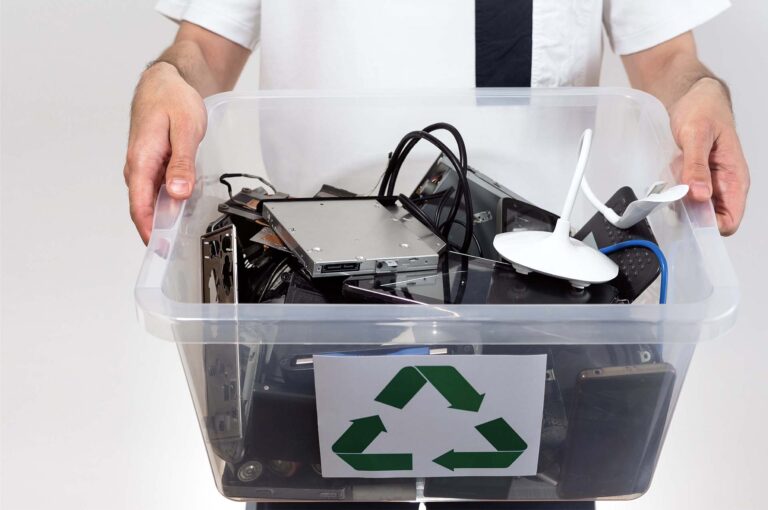
The Inconvenient Truth About Office Electronics
Advanced Recycling represents not merely an environmental option for Singapore businesses but an operational necessity, though few companies have yet recognized this reality. Walk through any office tower in the Central Business District and you will find floors filled with computers, monitors, printers, and servers, all destined for replacement within three to five years. Where do these devices go? The answer, for most organisations, remains uncomfortably vague. Some end up in storage cupboards, forgotten. Others are hauled away by clearance services with uncertain destinations. A small percentage finds its way to proper recycling channels. This haphazard approach no longer suffices, not when regulations tighten, not when stakeholders demand accountability, and certainly not when the volume of discarded electronics continues its relentless climb.
Why Your Business Cannot Ignore This
The rationale for establishing an e-waste programme extends beyond corporate social responsibility platitudes. Singapore’s Extended Producer Responsibility regulations, which took effect in 2021, created legal obligations for businesses regarding electronic waste. Companies generating significant e-waste face reporting requirements and potential liabilities for improper disposal.
Moreover, reputational considerations matter increasingly. Clients and partners scrutinise environmental practices. Employees, particularly younger workers, care about their employers’ sustainability commitments. Investors incorporate environmental, social, and governance factors into valuations. An organisation without a credible e-waste programme risks being perceived as indifferent or negligent.
The financial argument also compels attention. Electronics contain valuable materials, gold, copper, rare earth elements, that represent recoverable assets rather than disposal costs when properly managed.
Step One: Audit Your Electronic Inventory
Implementation begins with understanding what you possess. Most businesses lack accurate inventories of their electronic equipment. Computers and phones get tracked through IT asset management systems, but printers, scanners, monitors, and peripherals often escape documentation.
A thorough audit catalogues:
- All desktop computers, laptops, and tablets
- Monitors and display screens
- Printers, scanners, and multifunction devices
- Servers and networking equipment
- Mobile phones and accessories
- Batteries of all types
- Specialised equipment specific to your industry
This inventory should note purchase dates, expected lifespans, and replacement schedules. Such documentation enables planning rather than reactive disposal when devices fail.
Step Two: Establish Collection Infrastructure
E-waste programmes require physical infrastructure for temporary storage. Designate secure collection points where employees can deposit small electronics, phones, keyboards, mice, cables. For larger items like computers and printers, establish procedures for IT departments to segregate decommissioned equipment.
Storage areas must meet safety requirements. Damaged batteries pose fire risks. Devices containing sensitive data require secure handling. Singapore’s Advanced Recycling partners can advise on appropriate storage configurations that comply with regulations whilst maintaining workplace safety.
Step Three: Develop Data Security Protocols
Perhaps the greatest obstacle to proper e-waste disposal involves data security concerns. Organisations hesitate to release devices containing potentially sensitive information. This anxiety is legitimate, but solvable.
Comprehensive data destruction protocols include:
- Software-based data wiping using certified erasure programmes
- Physical destruction of storage media when required
- Documentation and certification of destruction processes
- Clear chain of custody from device decommissioning through final disposal
Advanced Recycling facilities offer certified data destruction services that meet international standards, providing documentation that satisfies both internal audit requirements and regulatory compliance obligations.
Step Four: Partner With Certified Recyclers
The choice of recycling partner determines programme success or failure. Singapore hosts numerous waste management providers, but not all possess the expertise, equipment, or certifications necessary for proper e-waste handling.
Evaluation criteria should include regulatory compliance certifications, transparent processing methods, downstream accountability for materials, data security capabilities, and pickup logistics suitable for your locations.
Singapore’s Advanced Recycling sector has developed specialised capabilities addressing the unique challenges Singapore businesses face: limited storage space, high security requirements, and the need for documented compliance with evolving regulations.
Step Five: Train Employees and Communicate
The most sophisticated infrastructure fails without user participation. Employees need clear guidance on what constitutes e-waste, where to deposit it, how to prepare devices for collection, and why the programme matters.
Training should address common questions: Can I dispose of personal electronics through the office programme? What happens to donated devices? How is data security ensured? Clear answers build trust and participation.
Regular communication maintains awareness. Include e-waste programme updates in internal newsletters, display collection point signage prominently, and recognise departments achieving high participation rates.
Step Six: Measure and Report
What gets measured gets managed. Track programme metrics: total weight of e-waste collected, number of devices processed, materials recovered, cost savings achieved, and carbon emissions avoided.
These metrics serve multiple purposes. They demonstrate programme value to management, provide content for sustainability reports, identify improvement opportunities, and fulfill regulatory reporting requirements.
Advanced Recycling partners typically provide detailed reporting on collected materials, processing methods, and environmental impact, simplifying your internal tracking obligations.
The Hidden Benefits
Beyond compliance and reputation, effective e-waste programmes generate unexpected advantages. Employees appreciate working for organisations that act responsibly. The discipline of asset tracking often reveals inefficiencies in procurement. Partnerships with recyclers can extend to other waste streams, improving overall environmental performance.
Moving From Intention to Action
The gap between recognising the need for an e-waste programme and actually implementing one defeats many organisations. Competing priorities intrude. Complexity seems daunting. Inertia prevails.
Yet the alternative grows increasingly untenable. Regulations will tighten, not relax. Stakeholder scrutiny will intensify, not diminish. The electronic waste stream will expand, not contract. Businesses that establish programmes now position themselves advantageously relative to competitors who delay.
The process need not overwhelm. Begin with the audit. Establish one collection point. Partner with experienced recyclers. Build from there incrementally. What matters is starting, converting good intentions into operational reality through partnership with specialists like Advanced Recycling.